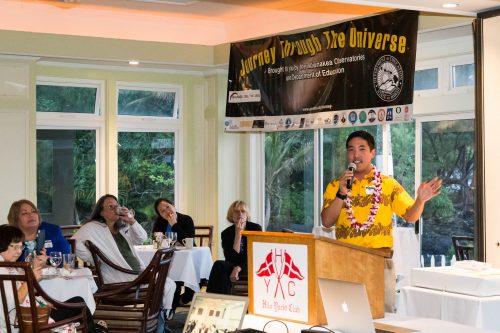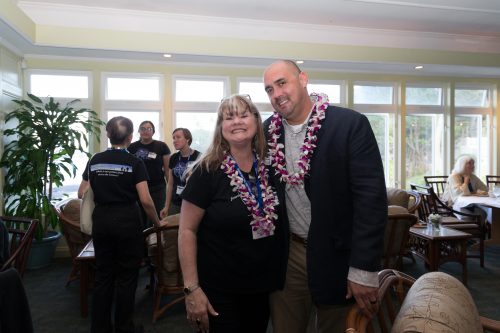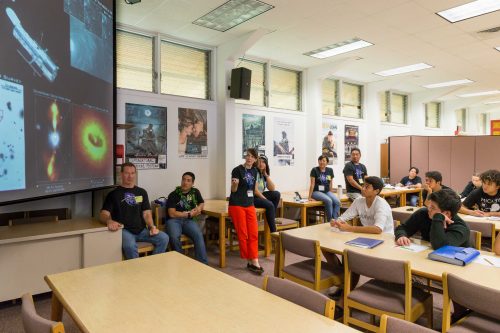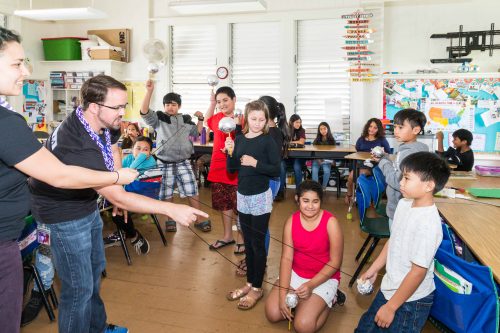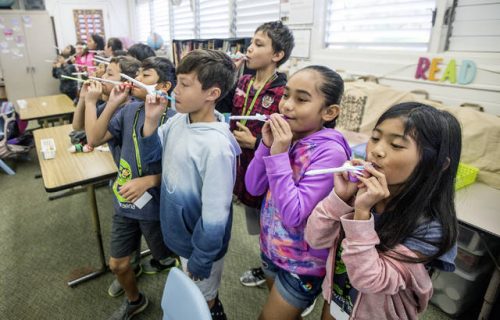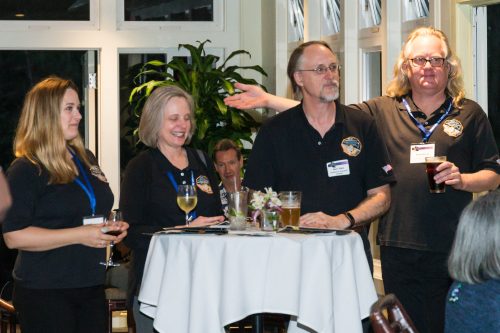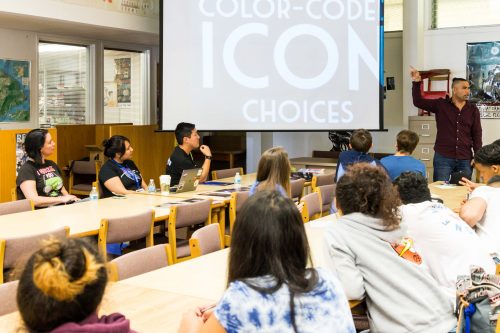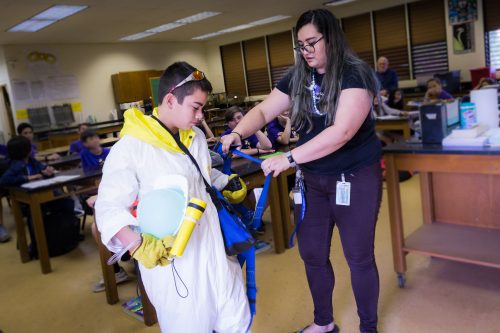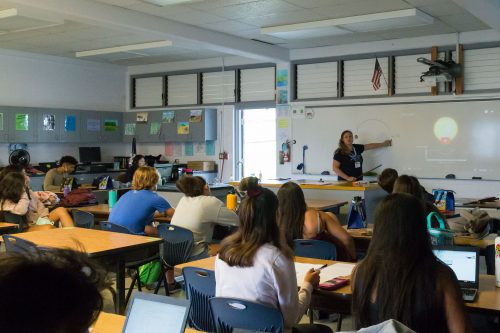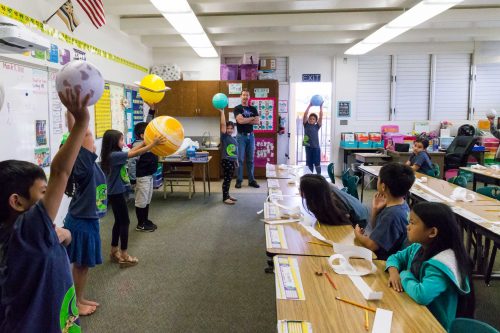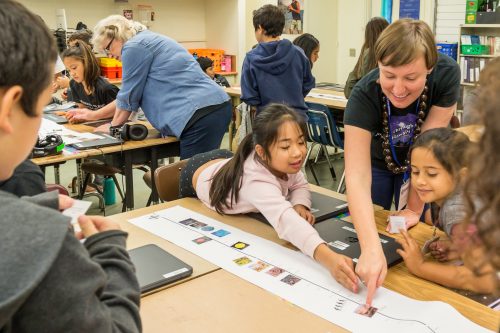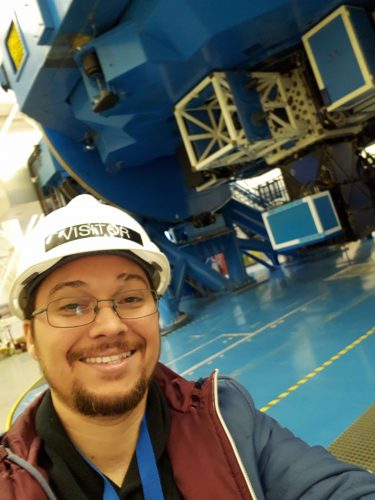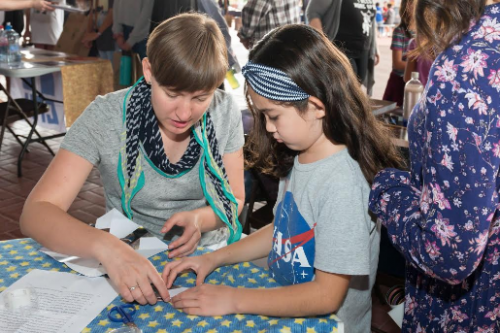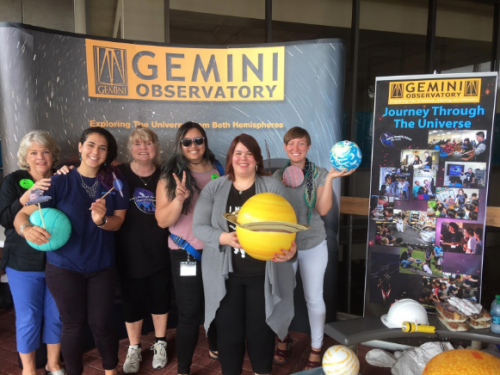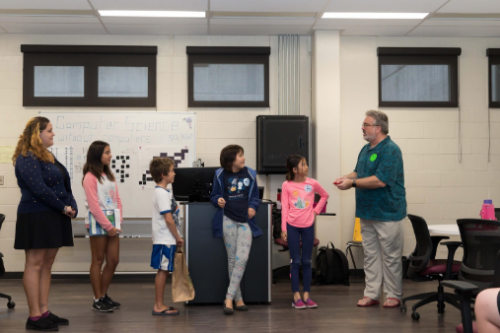- Date: 13 Apr 2018
- Comments: (0)
- Categories: For Astronomers, For Everyone
Get to Know Gemini is a new series of blog posts aimed to highlight the different careers, backgrounds, and types of people contributing to Gemini Observatory and its science.
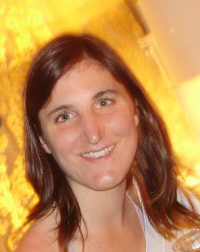
Name: Laure Catala
What is your current position and at which telescope?
AO (adaptive Optics) science fellow at Gemini North
In four lines or less, explain what you do as part of the Gemini Observatory team?
ALTAIR is the AO system at Gemini North. The goal of an AO system is to improve the image quality delivered by the telescope by removing the aberrations caused by the atmosphere. As the AO fellow I am in charge of making sure that ALTAIR works properly. This involves keeping track of daily calibrations and faults that may occur during night observations in order to find, understand and solve the issue. In addition I am also working on longer term upgrades of ALTAIR in order to improve its performances.
How long have you worked for Gemini?
I started at Gemini early December 2016, so I’ve been part of the team for a bit over a year.
What drew you to this job?
After a phd in atmospheric turbulence characterization and AO simulations I was looking for a postdoc that would allow me to put in practice my acquire knowledge in AO on a system currently running on a telescope and Gemini offered me this opportunity.
What is the best part of your job?
After theoretical work, getting my hands on a real system… which can also be the frustrating part as one cannot poke it as much as in simulation or in the lab since the system needs to be running every night. Though, it also makes things interesting on how to combine the research and development aspect with the constraints of a running facility instrument.
Where are you originally from/where did you grow up?
I grew up in the South-West of France, near Toulouse, fed on sun, amazing food, rugby and good wine
What skill do you think is most important to know for your job?
I’d probably say adaptability, creativity and ability to work in a team.
Why is astronomy important?
As any fundamental science, it provides for cutting edge technologies that wouldn’t be developed otherwise. Those will ultimately end up being used in everyday life devices (GPS, MRI, digital camera …etc). On a broader perspective, I believe it is inherent to human beings to push boundaries and try and grasp a better understanding of ourselves and our environment all the way to the big question of where did everything begin. Astronomy is one aspect of that fundamental search for more knowledge, which is also universally shared across time and cultures.
In three lines, explain your PhD thesis.
One aspect of my thesis, which involved instrument development, was to characterize the atmospheric turbulence causing image distortion at the Sutherland Observatory (South Africa). I then used those measurements into simulations in order to assess the potential image quality improvement that an Adaptive Optics system could provide on the Southern African Large Telescope (SALT).
What are your current research interests?
My main research interests are related to AO systems. Those include, the effect of vibrations and how to compensate for them as well as PSF-reconstruction of AO images. I have also some interests in galaxy dynamics and the use of gravitational lensing to resolve and study high-redshift galaxies.
What is your favorite movie?
Tough one… I’ll go for “La fille sur le Pont”, beautiful black and white movie from Patrice Leconte, definitely one of my all time favourite.
What is the latest book you have read?
Well I always have several ones going. At the moment I’m busy with “Petit Pays” by Gael Faye, “Barbarian Days” by William Finnegan and “The Nix” by Nathan Hill.
What three albums would you bring with you to a desert island?
Only 3 is a hard choice, but I guess I’ll go for:
“Hombre et Lumiere” by Claude Nougaro… I grew up listening to him, can’t go anywhere without some of his songs.
“” Fela Kuti… I definitely need jazz, very difficult to pick 1 album but I’ll go for one that covers African music as well.
“My Generation” The Who, because one needs some great classic rock too.
What is one hobby of yours?
The latest on a long list is outrigger Hawaiian canoe.
Favorite beverage?
Well, it depends on circumstances, but coffee and wine will be my 2 liquids of choice!
Check back next month to learn more about the staff that help Gemini to explore the Universe and share its wonders!

